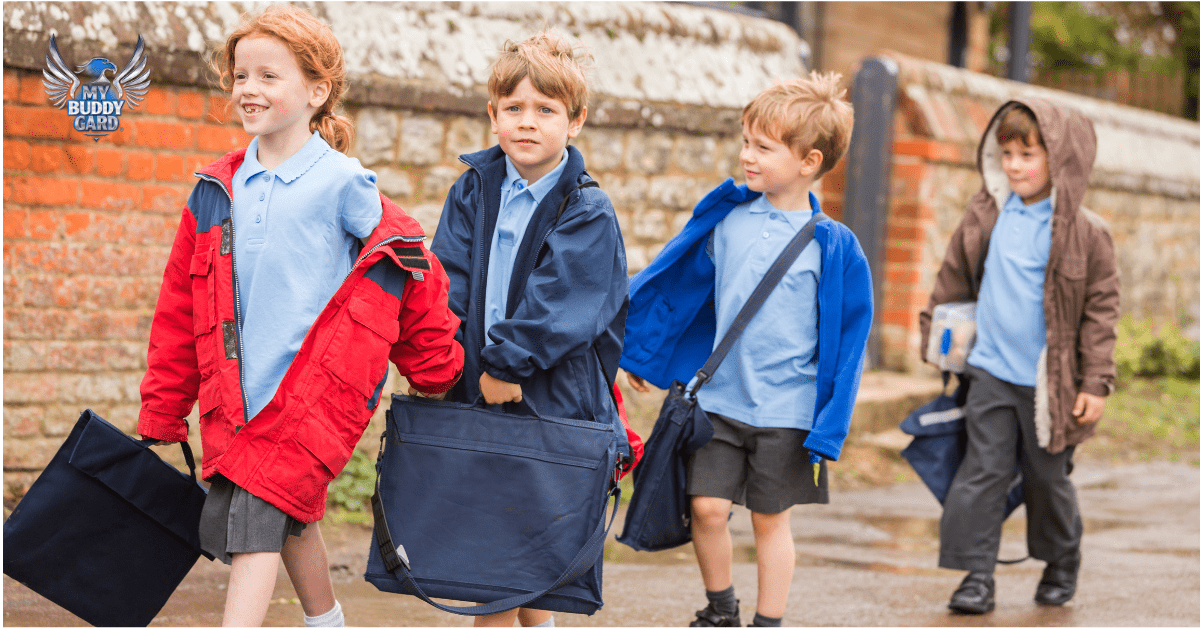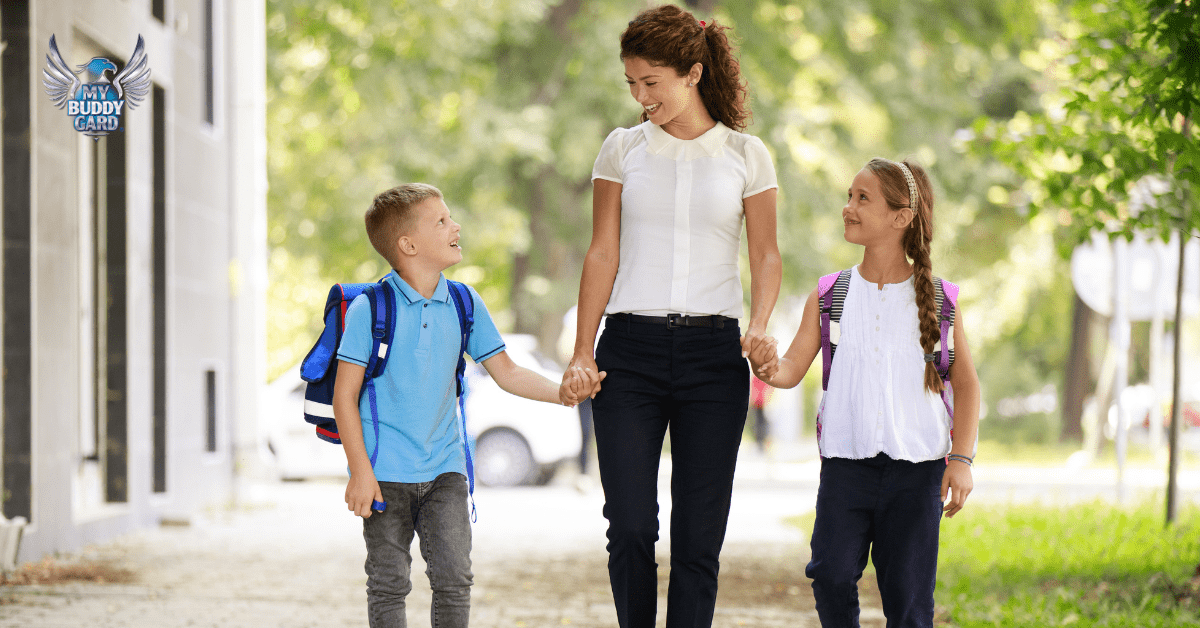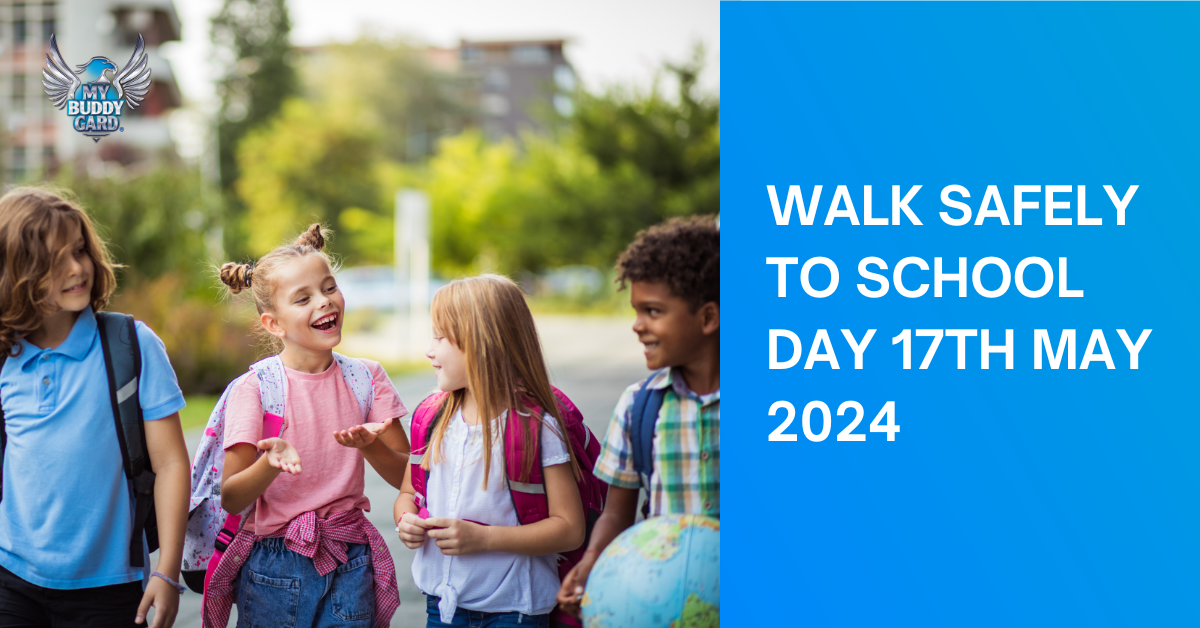Walk Safely to school day 17th May 2024
Can you believe it’s been 25 years since Walk Safely to School Day started? It’s got me thinking – when we see a kid walking alone, do we cheer their independence or worry about where their parents are? It’s a curious thing, isn’t it?
We all know the world isn’t as safe as it used to be. That’s why something as simple as walking to school can feel like entering a danger zone. But here’s the thing, walking to school is a big deal. It’s a milestone that teaches kids independence – when it’s age-appropriate and safe, of course!
Why is it so important? Well, it’s more than just getting from A to B. It’s about boosting confidence, self-esteem, and self-reliance. It helps kids sharpen their problem-solving skills and makes them feel important. When they’re out there on their own, making decisions and facing challenges, they’re building the foundation for a happier, healthier life. Don’t you agree?
So why is it such a struggle for us parents to loosen the reins a bit? It’s uncomfortable, sure. It feels like we’re losing control, and we worry about their safety. We don’t want them to grow up too fast – after all, they’re still our babies, right? But as they hit double digits, we know we need to start letting go, bit by bit. It’s not about burdening them with heavy responsibilities; it’s about preparing them for adulthood.
But here’s where it gets tricky: every child is different, and so is every parent’s journey. It depends on the kid’s maturity, the circumstances, the trust between parent and child, and any unique needs they might have.

And let’s talk about mom guilt – it’s real. Especially if your child has a neurodiversity, it’s natural to want to bubble-wrap them. Taking baby steps is okay – sometimes it’s exactly what they need. But we also need to recognise when our fears are holding them back, not their abilities. Giving them some freedom, even if it’s scary, is part of the deal.
Walking to school is a great way to ease into independence. But before you send them off on their own, it’s important to prepare them. Start with practice runs, accompanying them on the route they’ll take to school. During these trial walks, encourage them to make decisions, like which way to go at intersections or when to cross the street. Ask them questions along the way to gauge their understanding and confidence: “What would you do here?” or “Do you know which way to go next?” This not only helps reinforce their sense of direction but also empowers them to think critically and problem-solve in real-time situations.
Setting ground rules is another crucial step. Establish clear guidelines for their journey, such as sticking to designated crossing points, avoiding distractions like toys or a ball, and staying on the agreed-upon route. For example, you might decide that they’re only allowed to cross at traffic lights or that they shouldn’t carry anything in their hands to stay focused on the road.

Consider investing in one of our Kids GPS watches for added peace of mind. These devices have been a game-changer for many parents, providing a sense of security knowing they can track their child’s location with a simple push of a button. Not only does it give parents the ability to intervene quickly in case of emergency, but it also reassures kids that help is just a click away if they ever feel lost, anxious, or scared.
Ultimately, walking to school offers both kids and adults valuable benefits. For children, it’s a chance to develop independence, confidence, and decision-making skills. It allows them to experience a sense of freedom and responsibility while navigating the world around them. Meanwhile, parents gain peace of mind knowing that their child is capable of safely handling this everyday task and can reach out for assistance if needed.
But sometimes, we’re just not ready to let go, and that’s okay too. If you feel like your child isn’t quite prepared or if you’re struggling to release your tight grip, take it slow. Walking to school together can be a great compromise – it allows you to supervise while still giving them a taste of independence. Remember, every family is different, and there’s no one-size-fits-all approach to parenting. Trust your instincts and do what feels right for you and your child.
So whether you’re taking those first steps toward independence or holding on a little longer, just get out there and enjoy the journey.

